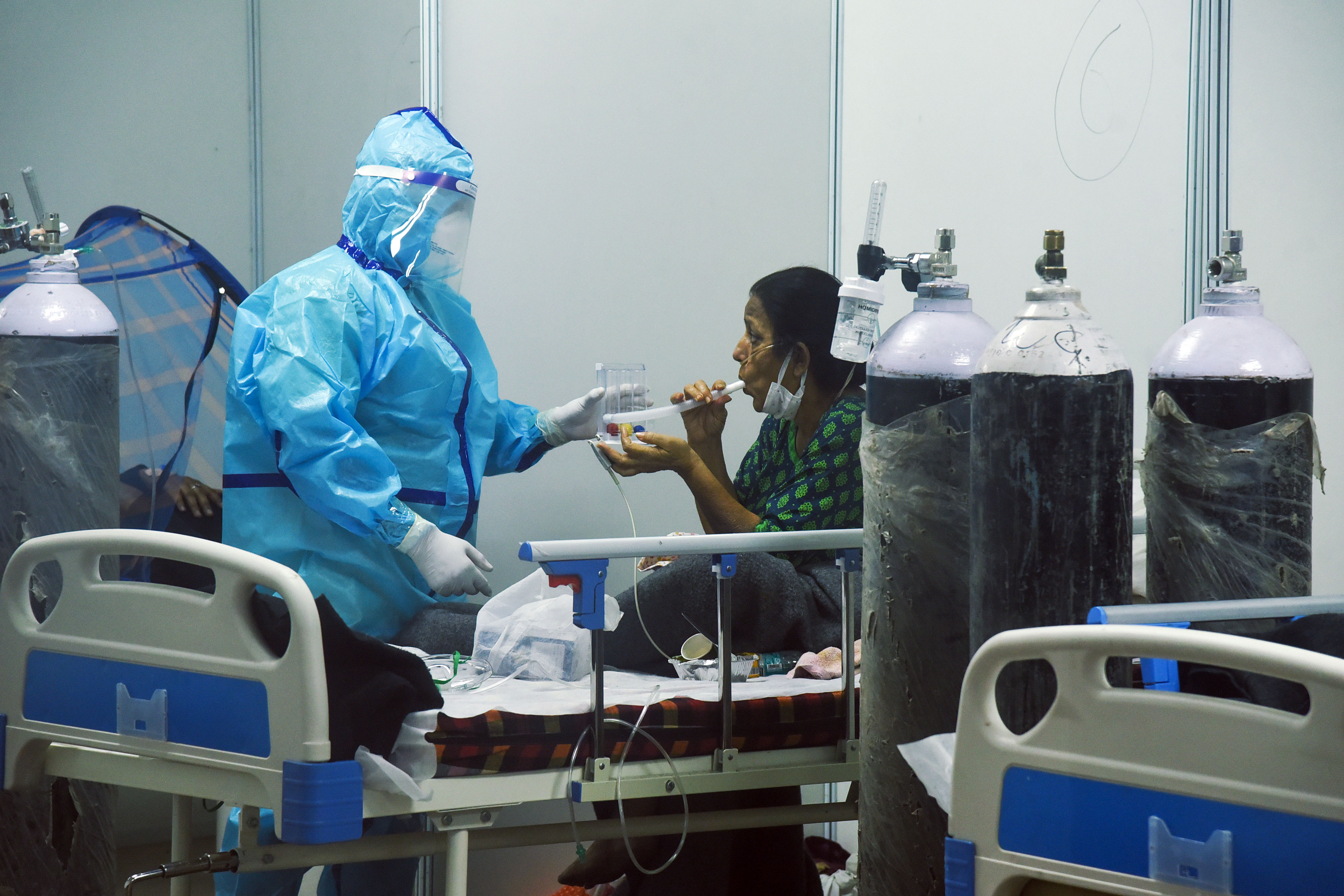During Covid-19 times lung health proved to be a critical vital statistic. And anything related to the improvement of lung health was of immense importance. Spirometers proved to be a must-have for every household.
A spirometer is a handheld medical device that measures the volume of your breath. It helps your lungs recover after surgery or lung illness, keeping them active and free of fluid.
A piston rises inside the device to measure your breath volume when you breathe from an incentive spirometer. A healthcare professional can set a target breath volume for you to hit.
Advertisement
Now the question is how to use this important equipment correctly
The doctor, surgeon, or nurse will likely give you specific instructions on using your incentive spirometer.
- Sit up on the edge of your bed or chair.
- Hold the incentive spirometer in an upright position.
- Breathe out normally.
- Place the spirometer mouthpiece in your mouth and close your lips tightly around it.
- Breathe in through your mouth as slowly and deeply as you can, causing the piston or ball to rise toward the top of the chamber.
- Hold your breath for 3–5 seconds or as long as possible.
- If the spirometer has a goal indicator, use this to guide your breathing. If the indicator goes above the marked areas, slow your breathing down.
- Remove the mouthpiece from your mouth.
- Breathe out normally. The piston or ball will return to the bottom of the chamber.
- Rest for a few seconds, then repeat the steps 10 or more times.
- Go slowly. Take some normal breaths between deep breaths to prevent light-headedness.
- Do this every 1–2 hours when you’re awake.
- After each set of 10 deep breaths, cough a few times to clear your lungs.
After each set of 10 breaths, it’s a good idea to cough to clean the lungs of any mucus buildup. You can also clear your lungs throughout the day with relaxed breathing exercises like the below:
- Relax your face, shoulders, and neck, and put one hand on your stomach.
- Exhale as slowly as possible through your mouth.
- Breathe in slowly and deeply while keeping your shoulders relaxed.
- Repeat four or five times per day.
The main column of your incentive spirometer has a grid with numbers. These numbers are usually expressed in millimetres and measure the total volume of your breath.
The piston in the main chamber of the spirometer rises upward along the grid as you breathe in. The deeper your breath, the higher the piston rises. Next to the main chamber is an indicator that your doctor can set as a target.
There’s a smaller chamber on your spirometer that measures the speed of your breath. This chamber contains a ball or piston that bobs up and down as the speed of your breath changes.
The ball will go to the top of the chamber if you’re breathing in too quickly and will go to the bottom if you’re breathing too slowly.
Many spirometers have a line on this chamber to indicate the optimal speed.
Normal values for spectrometer vary according to age, height, and physical sexual attributes all play a role in determining what’s normal for a person to person.
There are a few risks related to the spirometry test itself. However, there is a minor risk that you may get an indirect infection.
This could happen in several ways:
- Although there is no data widely available on spirometer disinfection, there is potentially a concern that if the spirometer tubing is not disinfected correctly after each test, people may be at risk of infections by a variety of fungi microorganisms. These include respiratory illnesses such as influenza, measles, chickenpox, pneumonia, and tuberculosis. According to a 2015 research review. Trusted Source researchers in at least one study found bacterial growth on spirometer tubing.
- Other equipment pieces, such as the breathing valve and mouthpiece, may also transmit infection. It should be disinfected and replaced between patients. In addition, you may want to be careful about the laboratory infrastructure — the chair you’re sitting on, nearby tables and surface areas, and anything else you may come into contact with. Use hand sanitiser liberally and wash your hands after the test. This may also help protect you against the coronavirus that causes COVID-19 and other viruses.
- Since spirometry involves breathing aerosolized particles, there’s a risk of spreading airborne viral illnesses. This risk applies both to the medical staff and to patients who may be breathing in the air where a previous patient was present. While a variety of illnesses can spread through the air, the gravest concern at present is the coronavirus that causes COVID-19. Speak with your doctor before your test if you think you may have symptoms of COVID-19Trusted Source
- People with cystic fibrosis require more frequent lung function tests. However, they are also at a higher risk of infections in the upper respiratory tract from contact with equipment related to the test and the personnel performing the test.
This risk may be higher in different countries, where there are other standards and protocols for preventing the spread of infection.
Advertisement











